Apogee Duetta Signature
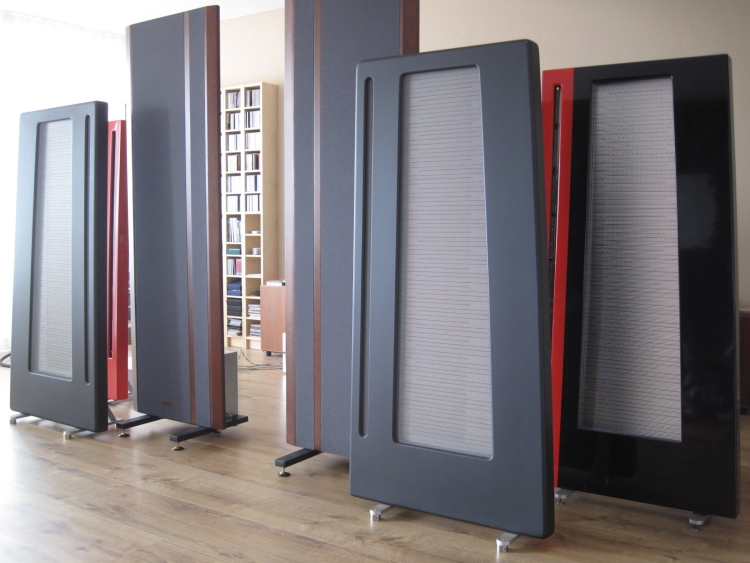
Crossover comparisons:
– with newly made non standard crossover
– with original Duetta Reference crossover
– with original DS crossover
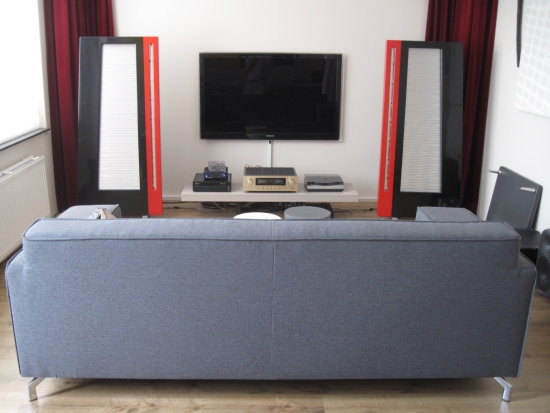
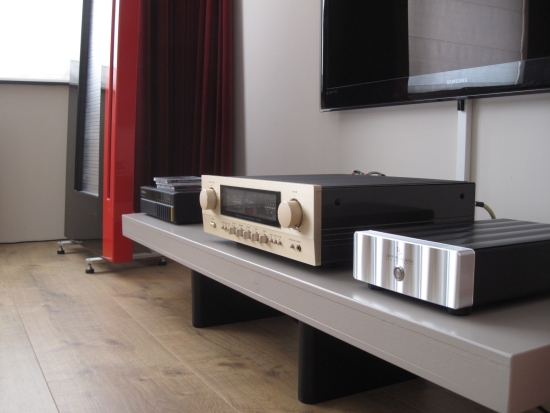
Above: setup used for comparisons.
Background
I’ll start this review by reiterating my conclusion from 2 years ago, slightly modified to reflect my current knowledge:
There’s no way around it and reviewers at the time weren’t wrong: Full Range Apogees really are something special. Most incredible is their bass performance: at once deep, full, dynamic and fast. All three sets of Duetta Signatures produce bass in a fashion that makes visitors wonder if the subs are still on. Second: they’re incredibly dynamic and fast, in a way that makes Magnepans seem overly well-behaved and sleepy. Lastly, their timbre is very, very good. Piano really sounds like the percussion instrument that it is.
The Magnepan MG3.6R by comparison often make piano sound too thin, almost like it is a keyboard and not the real thing. And I’m talking about the Maggies with aid of two REL Strata II subs. The Magnepans have tight, articulate bass, but there’s no real drive to speak of. There are advocates for both camps, each accusing the other camp’s speaker of having coloration. I think both have valid arguments: yes, the Apogees can sound too hard and even a little metallic in the midrange, depending on circumstances and equipment matching.
And yes, the Magnepans sound restrained and somewhat veiled, compared to Apogees. But they’re both great speakers and the Magnepans have at least one big advantage over Apogee DS, which is their treble, which is quite simply sublime. Apogee DS treble by comparison is less refined and less airy. In case of the DS with modified crossovers the treble is even coarse, forward and a little shouty.
The 2 original pairs both had more fluid treble than the refurbished set, but were both less lively and articulate. The liveliest of the two was still less fluid than the Magnepans and still slightly hot in the treble. The oldest pair was arguably not shouty or hot and actually quite fluid, but also very relaxed. Too relaxed for me.
While it could be argued that perhaps the Maggies sweeten the treble too much and perhaps the original DS’ treble performance is simply honest and revealing what’s on the recording, the refurbished pair definitely had too much treble energy. But that’s because the crossovers are non-standard and have tipped-up treble. On balance though I find that all Duetta Sigs sound more real than the Magnepans and I simply enjoy them more, and more actively. Music sounds more real to me, more like a live performance, and it grabs me more because of it.
So, while I thoroughly enjoy the Duettas, and the refurbished pair is clearly more live, and life-like than the Magnepans, they can also be pretty harsh throughout the midrange and treble. It is my quest to see what happens if these refurbished speakers are connected to original crossovers.
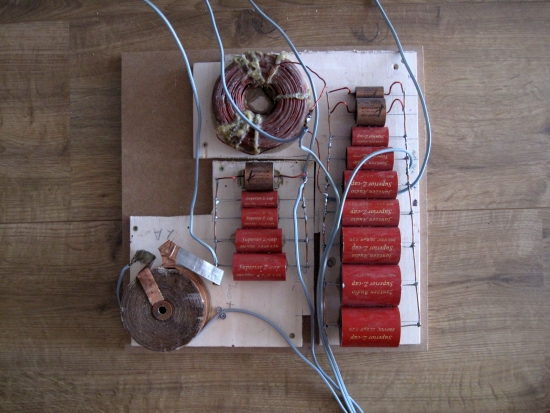
Above: the home made crossovers with which the Red and Black Duettas were purchased. Quality components and made with care, but deviating from the classic Apogee sound.
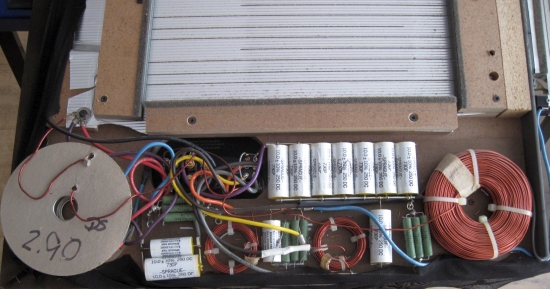
Above: original Duetta Signature crossover (part of an original pair that I no longer have)
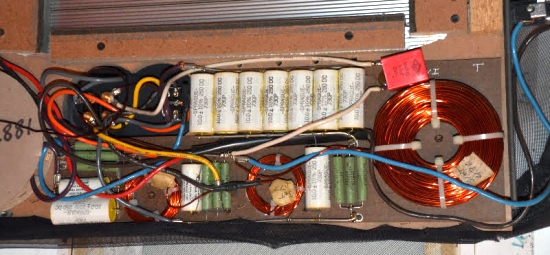
Above: original Duetta Reference crossover (still in its donor speaker). The only difference with the regular Duetta Signature crossover is the addition of the square red capacitor visible behind the MRTW coil on the right.
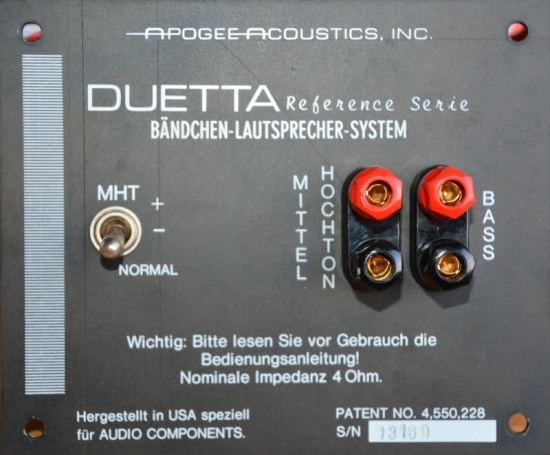
Above: binding post of the Duetta Reference donor speakers. This set was about to be refurbished by Henk van der Hoeven, Dutch Apogee restorer. The speakers would also receive new crossovers so the old ones were superfluous.
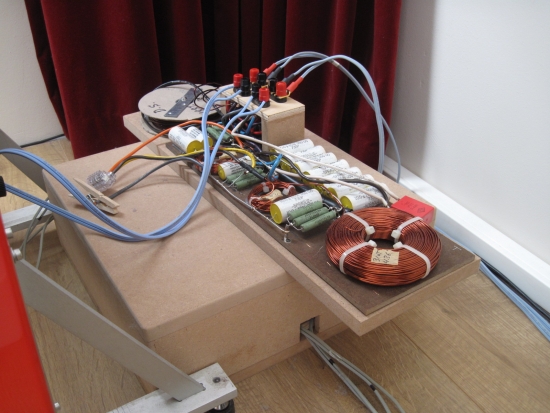
Above: original Duetta Reference crossover as used for the comparisons
Original Crossovers for JW’s refurbished Duetta Signatures
It’s interesting how sometimes puzzle-pieces just fit together. After I posted the announcement for an upcoming review of a new breed of Apogee-like speakers by the name of Clarisys, the state of JW’s Red ‘n Black Duetta Signatures became an active subject again. Although these speakers have been fitted with new KLM2 bass- and MRTW ribbons and have very nice new front covers, their crossovers home made and non-standard, and I’ve always found them to be too forward and brittle in the treble at times.
Although JW’s red ‘n black Duettas have been stored at my place since forever it seems, they are not my own. I use Divas and am very happy with them lately. JW himself has been using an original pair of DS and is completely happy with them, so the thought of modding the DS’ crossovers was never a very pressing one.
Anyway, when I spoke with Graz and Henk van der Hoeven (official Dutch Apogee restorer) about the upcoming review of the Clarisys speakers, they agreed that the DS needed to be brought up to spec, and Henk was more than happy to help me with this. And so he donated a pair of original crossovers for me to connect to the Red ‘n Black DS.
Interestingly, the original crossovers that Henk provided are not for Duetta Signature, but for Duetta Reference. This is a special version for the German market, complete with terminal back plates with German lettering. Naturally I rather had a pair of truely original DS crossovers, but Henk assured me that the only difference was the presence of a single square red capacitor. Just to be sure, JW also carefully checked the schematics and photos of several DS pairs, and concluded that this is indeed correct.
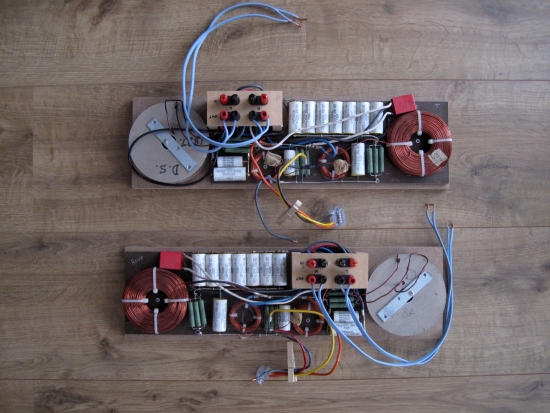
Above: originally the crossovers are mostly glued to a thin wood board but some parts such as the woofer coil and the connectors are screwed to the cabinet. I put all components together on a piece of MDF together with new connectors that are the same as the originals.
Listening
Using an Accuphase E260 integrated amp, we prepared for a one on one listening session. The original crossovers had their switches removed and had been hard-wired in the same configuration as the modified crossovers are: treble in the HI position. Still the original crossover was missing a few components but closer than this I could not get.
First impression switching from the home made crossovers to the originals is a feeling of much more coherence. Top to bottom all frequencies seem to be more balanced. The sound is also a little thinner, cleaner if you will. Bass has less bold power but still reaches as deep and seems more nimble and articulate. There’s even better low level detail and longer decay on subtle sounds. Treble while still hot, is also much more refined and fluid. Already I’m liking the old crossovers. Now switching to treble NORMAL, things get even better with even more coherence and treble loses much of its edge. Still, the treble can be peaky or metallic and this is something that I do not recognise in the original pairs, nor in my Divas, which also have been fully refurbished.
I have a feeling that either the implementation of the new tweeter foils, or the foils themselves, is not optimal. Mind you these tweeters were not installed by Henk but by the previous owner. But even if they were installed correctly, they may have deteriorated. And even if Apogee treble tends to become smoother with the years, none of the original pairs I heard had treble like these refurbished ones, which still seem off-balance, even with original crossovers.
In speaking with Graz about this he recommends going for the latest KLM-5 tweeter models, which he says are much improved. Since these are JW’s speakers, this decision is ultimately his, but I think this will happen at some stage. If it does, I will certainly update this review.
This crossover experiment was sparked by the pending review for Clarisys speakers, but these are still not released. You never know, but I’m not holding my breath anymore. Right now, the original ones, or new models directly from Graz are the way to go.
Delicate
As mentioned before: be careful when modding a crossover. Sure you could potentially improve things in certain areas, but the original crossovers are already of very high quality and chances are that you’re actually degrading the sound, even if you use better, more expensive components. The balance can be quite delicate indeed. One of the first things you lose with mismatched components is cohesion and transparency.
There’s more
After completing this review 3 years passed and at some point I decided to have the latest Graz KLM5 ribbons installed with the new interfaces and the new wired returns.
Serial Numbers:
DS refurbished pair: 13 185
DR Crossovers: 13 180
Refurbished pair ribbon types for the review so far:
Bass: KLM v2 (2006, KLM construction, v2 pattern)
MRTW: KLM2 (2006)
More Duetta Signature
Installing Graz’ latest KLM5 MRTW ribbons with new interfaces and wired returns
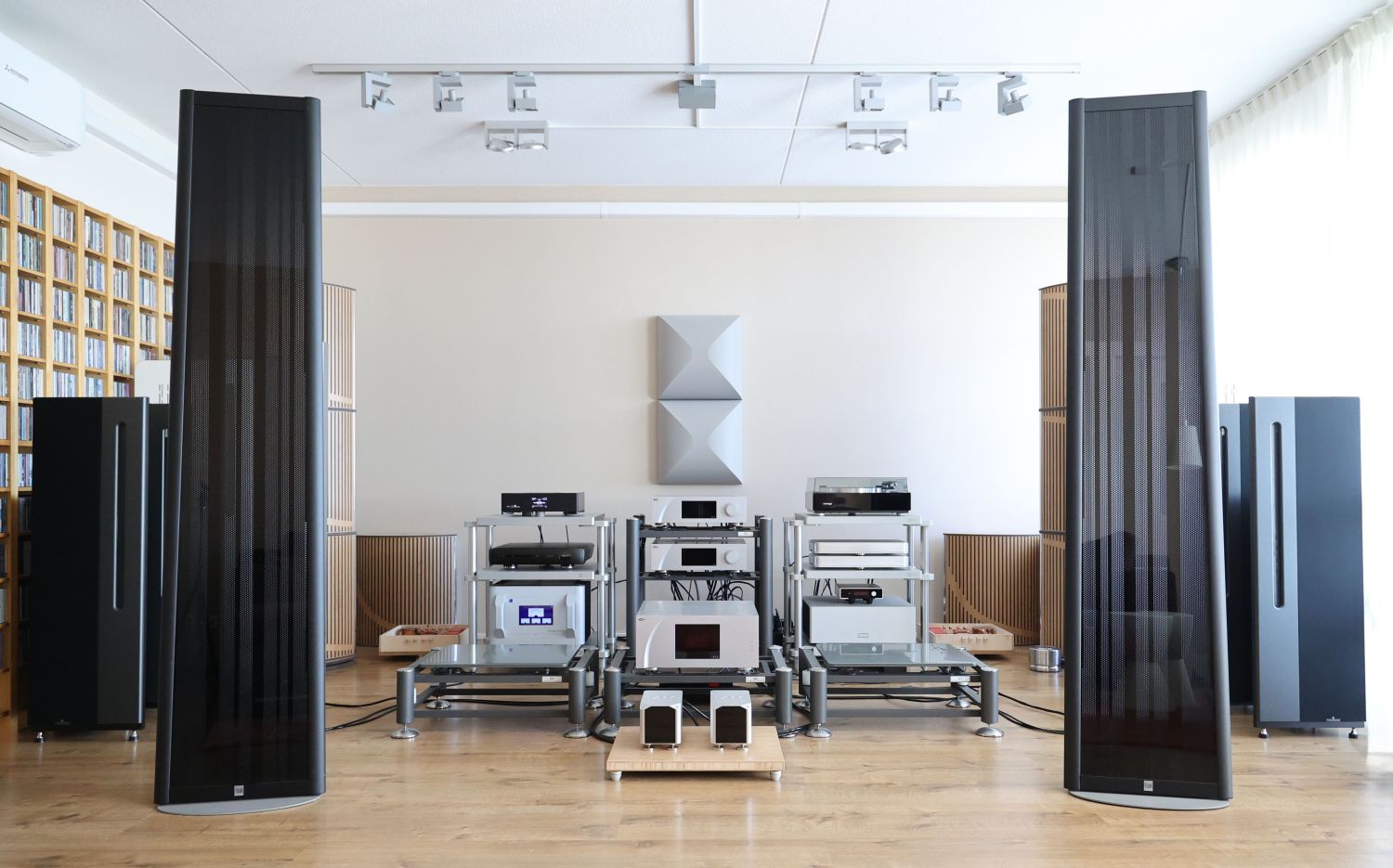
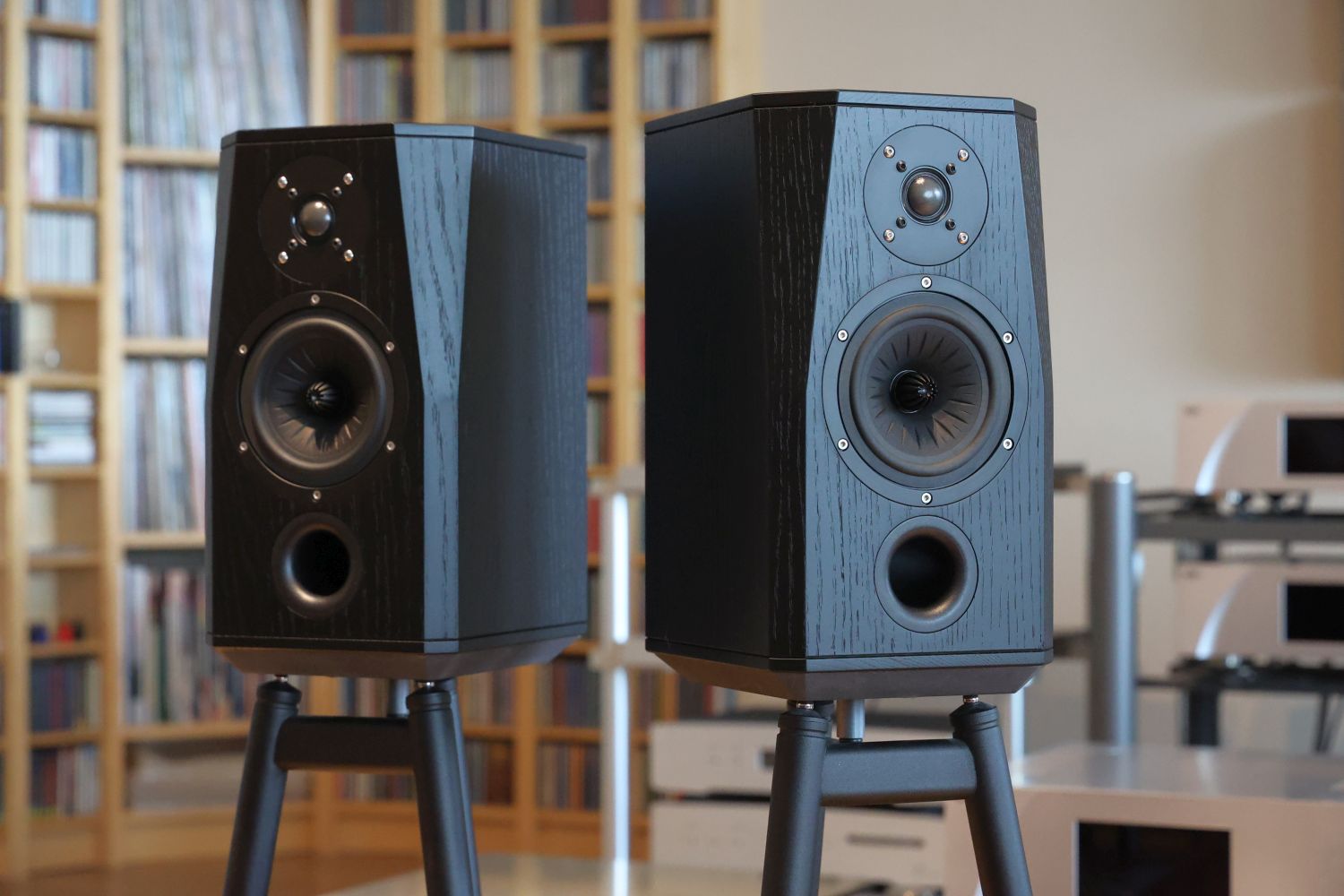
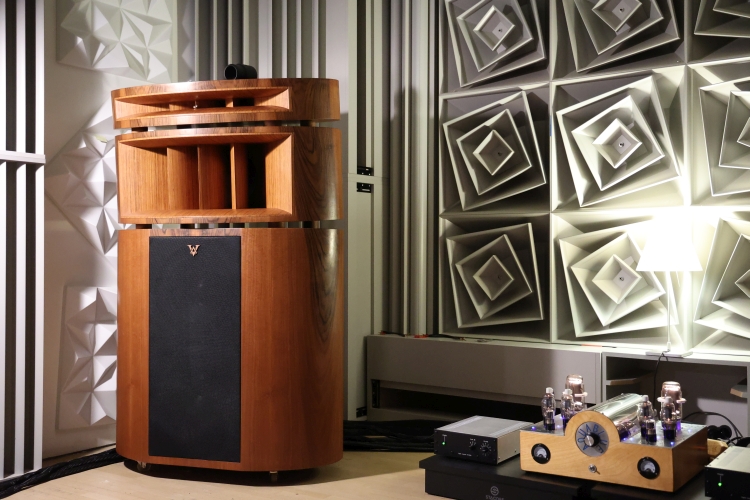
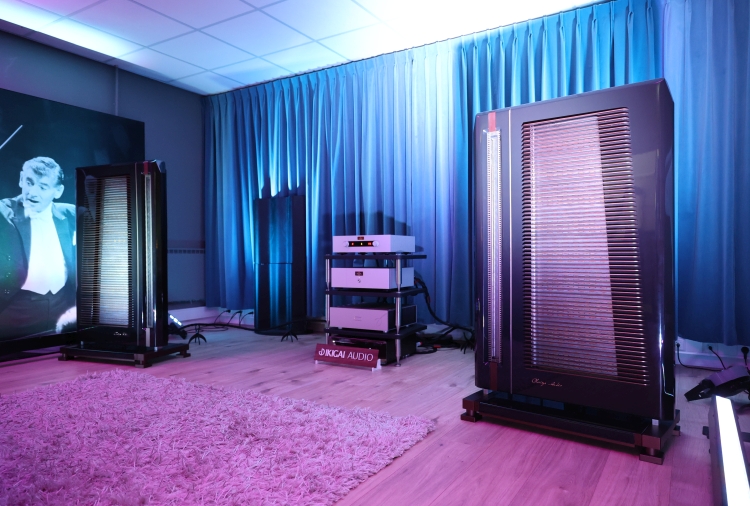
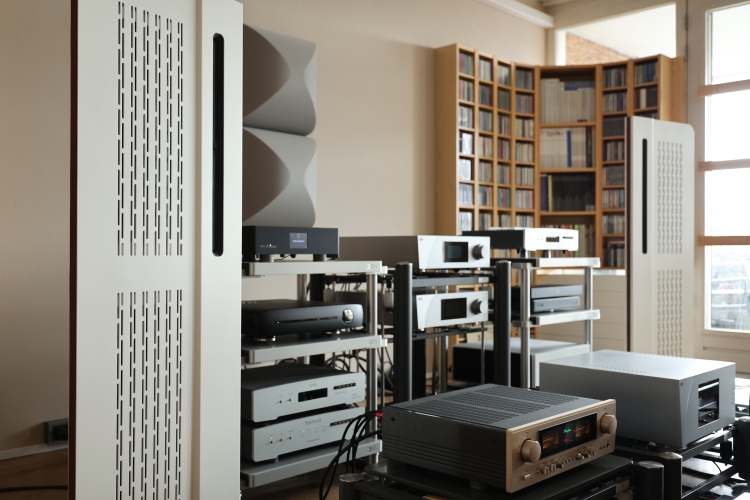
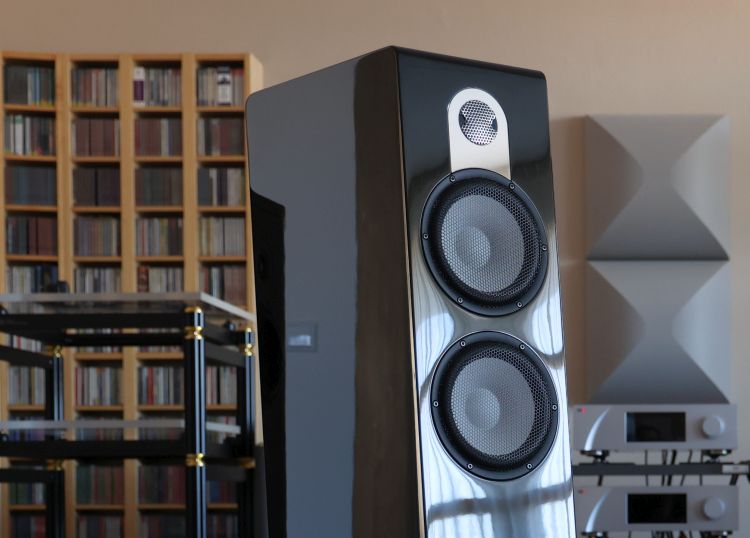
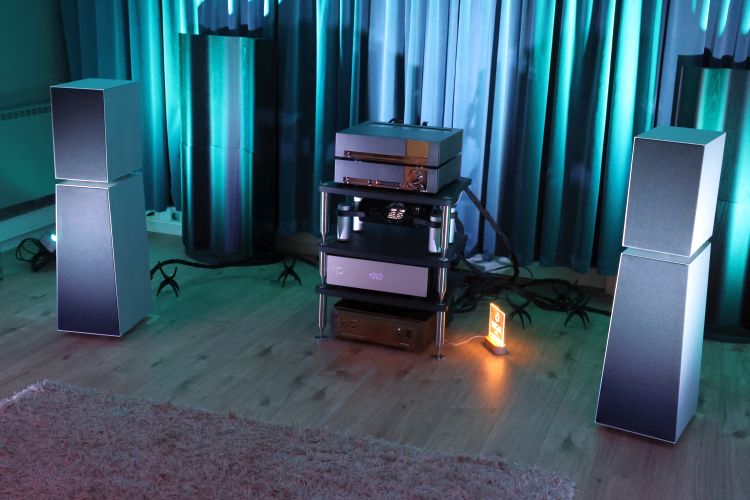
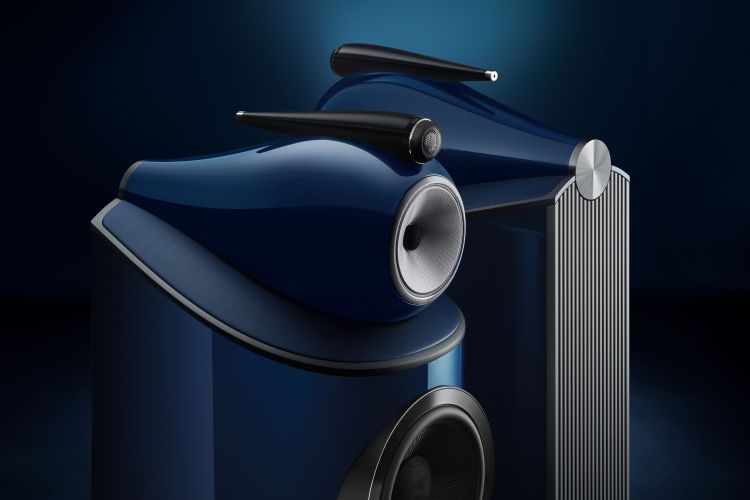
Are companies still doing Apogee Duetta signature repair on the east coast of usa
See this page for the Apogee Acoustics Endorsed Installers: https://www.hifi-advice.com/blog/specials-graz-endorsed-installers/
Dear Christiaan,
thank you for an exceptionally informative review / article on your journey with Apogee Duetta Signature.
One question, just to make sure I understand correctly:
The infamous risk of some “buzz” from the woofer foils on the Apogee Duetta Signature (and other full range Apogees) seem to be present at – high volume levels – *no matter* if it is the refurbished ones with newer woofer foils, or the original speakers with the original woofer foils. Is that understood right?
(In the text it said. “However, I quickly found that JW’s refurbished Duetta Sigs behaved exactly the same way, and also it was mainly the right hand speaker. I later found that even my Divas do buzz somewhat but only when pushed even harder. So I must conclude that with Apogees some buzz is apparently unavoidable. “)
Again, it is really great to have such detailed 1.st hand experience on both original and refurbished Apogee DS from your article.
(Short on tne background: I made a DIY version of the Apogee Duetta back in 1987. (All that budget allowed being a student at that time!) It survived the years, by some stroke of luck and although living a quiet life for prolonged periods – still play well until this day. Recently however I’ve acqiuired a set of the “originals” – Apogee DS (and a large Krell power amp to drive them from about the same time). Although I really liked my home cooked DIY Duetta version… getting the “real thing” (of course) is a serious step up and has, in short, simply re-ignited this crazy HiFi hobby. Truly a lot of fun, and what a joý these speakers are!
Thanks in advance!
Peter
How cool that you made your own magnetostatic speaker! Kudos!
The Apogee buzz applies to the full-range models, not the hybrids. Or, at least, not in my experience. The potential for buzz is offset by Apogee speakers’ immense bass power, and their relatively large foil travel may well be a factor in this. The thing with the buzz is that, when the speakers are in great shape, it is usually inaudible unless you play certain music styles loudly, and actively search for it. Typically, if it is there, the buzz will be evident when playing loud transients followed by silence. In that case, you will hear the transient, a bass stab or drum whack, for example, followed shortly by a fading buzz than sounds like a muffled rattle. My theory is that the buzz is made (more) audible when the foil is allowed to resonate by itself, and it is masked, reduced, mitigated, or maybe even eliminated when there are other sounds reproduced by the foil.
Interestingly, the state of the foam is not a great indicator for whether or not a speaker will have buzz. A friend has Full-range Apogees that, when excited above a certain volume level, buzz at a certain frequency. He has been unable to eradicate this even after refurbishing with new bass foils twice. However, when I listen in his system, I never hear it, unless he uses certain recordings and points it out. I understand one can get fixated on these things, but it is a relative matter.
In any case, this is just a risk that comes with these otherwise quite amazing speakers. However, my refurbished Divas never buzzed, and a friend’s original Duetta Sigs with foam that is totally gone (smudges and sort of melts when touched) have also never buzzed, unless played unreasonably loudly.